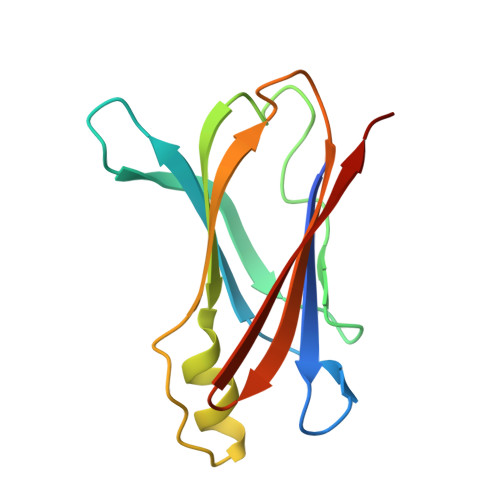A new crystal form of human transthyretin obtained with a curcumin derived ligand.
Polsinelli, I., Nencetti, S., Shepard, W., Ciccone, L., Orlandini, E., Stura, E.A.(2016) J Struct Biol 194: 8-17
- PubMed: 26796656
- DOI: https://doi.org/10.1016/j.jsb.2016.01.007
- Primary Citation of Related Structures:
5EZP - PubMed Abstract:
Transthyretin (TTR), a 54kDa homotetrameric protein that transports thyroxine (T4), has been associated with clinical cases of TTR amyloidosis for its tendency to aggregate to form fibrils. Many ligands with a potential to inhibit fibril formation have been studied by X-ray crystallography in complex with TTR. Unfortunately, the ligand is often found in ambiguous electron density that is difficult to interpret. The ligand validation statistics suggest over-interpretation, even for the most active compounds like diflunisal. The primary technical reason is its position on a crystallographic 2-fold axis in the most common crystal form. Further investigations with the use of polyethylene glycol (PEG) to crystallize TTR complexes have resulted in a new trigonal polymorph with two tetramers in the asymmetric unit. The ligand used to obtain this new polymorph, 4-hydroxychalcone, is related to curcumin. Here we evaluate this crystal form to understand the contribution it may bring to the study of TTR ligands complexes, which are often asymmetric.
Organizational Affiliation:
Synchrotron SOLEIL, l'Orme des Merisiers, Saint Aubin, BP 48, 91192 Gif-sur-Yvette, France; Dipartimento di Farmacia, Università di Pisa, Via Bonanno 6, 56126 Pisa, Italy.
















